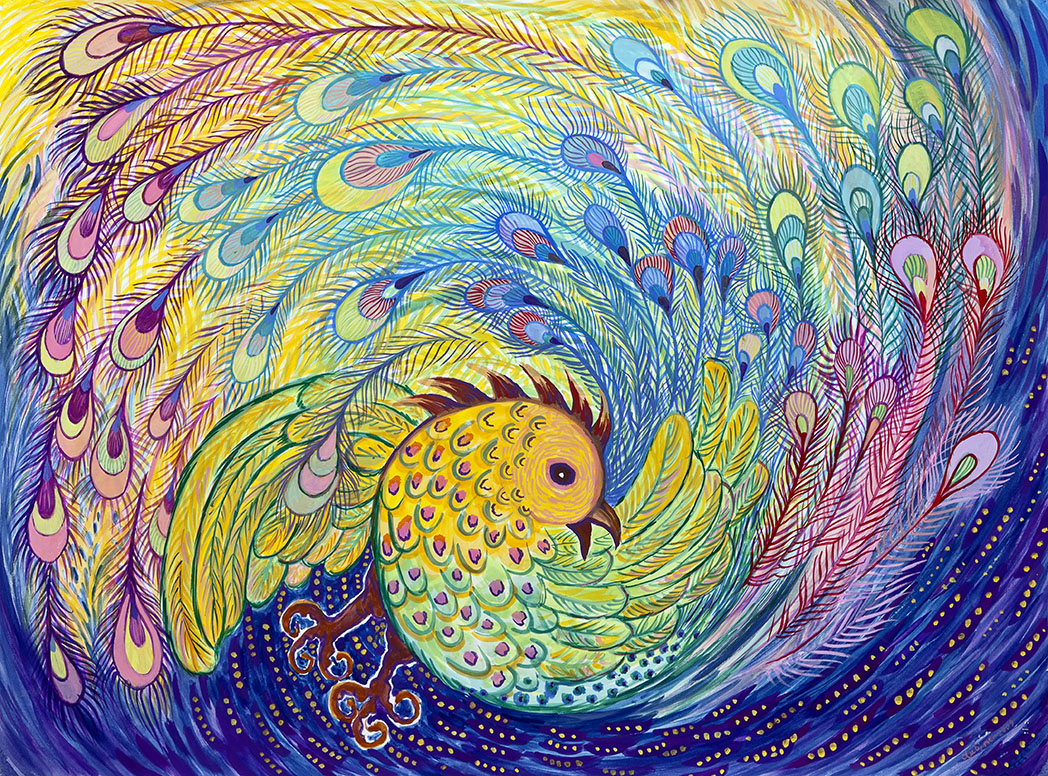Peacock
Enter the "Peacock", theme for my first blog of the new year, 2012. It's not hard to see why the peacock, a multi-hued swan-size bird, is emblematic of qualities such as beauty, grace, and pride. Pavo cristatus is the national bird of India and is protected by law in its native habitat. Sarasvati, the goddess of art, music and learning, is traditionally depicted riding on a peacock, and Indra sits on a peacock throne.
The peacock shows up in ancient Greek mythology too. By the first millenium BCE, the ancient Greeks had turned the beautiful, majestic and unmarried "Lady" Hera (aka Juno in Latin) into the jealous, vengeful wife of philandering Zeus. In one story, Zeus turned his lover, Io, into a white heifer. Hera was not fooled. She asked for the heifer as a gift, then had her chained to an olive tree. Then she had Argus, her servant and a giant with one hundred eyes, watch over the heifer. Even when Argus slept, a few of his eyes would stay open. But Hermes, following Zeus' orders, lulled Argus to sleep and then slew him. Hera honored Argus by putting his hundred eyes in a peacock's tail. Thus are we given another bloody myth to recount over the ages - trickery, seduction, murder, and sacrifice, somehow redeemed by a tale/tail of beauty.
But wait! my friend, Julienne Travers' book, The Serpent and the Storm God, reviewed by Craig Comstock in his latest Huffington Post blog, "deals in a special way with the goddess theme. Some writers have played up women as goddesses: if men can promote gods, women too will have had divinities in their own image. Travers, instead, envisions not the deification of women in the prehistoric civilization, but a social structure in which no one is made into a divinity; there are only the symbols of the importance of a life-force whose nature is female. She portrays the concept of a 'goddess' as an invention of the invaders from the steppes, who understood only a hierarchical social order and thus assumed that the spiritual symbols of women in prehistory were symbols of great aggressive power – as they believed their totem, the eagle or storm spirit, to be. The invaders eventually projected on women's symbols the form of a supernatural female Chief."
Maybe it's because I live in a world in which sex trafficking and arms sales are the two largest criminal industries (war is not considered "criminal") that I want to think that Julienne is right, and that we humans are capable of living in a world of fully capable, collaborating, creative, cooperating humans rather than endlessly-at-war creatures who enshrine our worst tendencies in myths and images of punitive gods and goddesses and national flags and songs like "Hail to the Chief." I wonder what stories were told, songs sung, dances danced by those women and men in prehistory.
Although it is too late to be 2012 New Year's eve entertainment, I recommend watching YouTube's collection of traditional peacock dances from India, Cambodia, and China, as well as two peacock belly dances, one a must-see from San Francisco ("Peacock Belly Dance"). Beautiful women representing the beautiful (male) peacock! Perhaps those are the kinds of dances our prehistoric ancestors danced.
May the glory of Pavo's jewel-like tail shine on us throughout the coming year.

